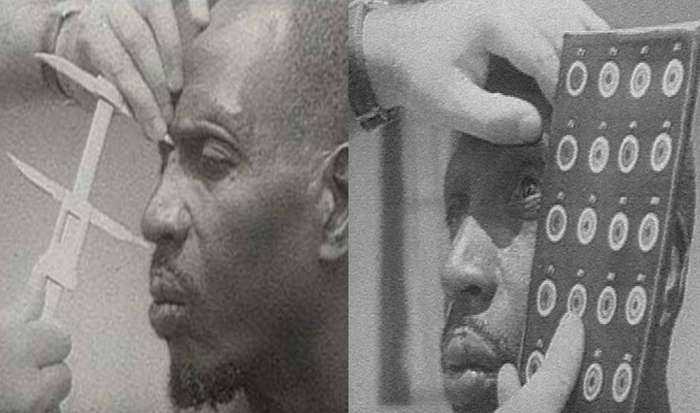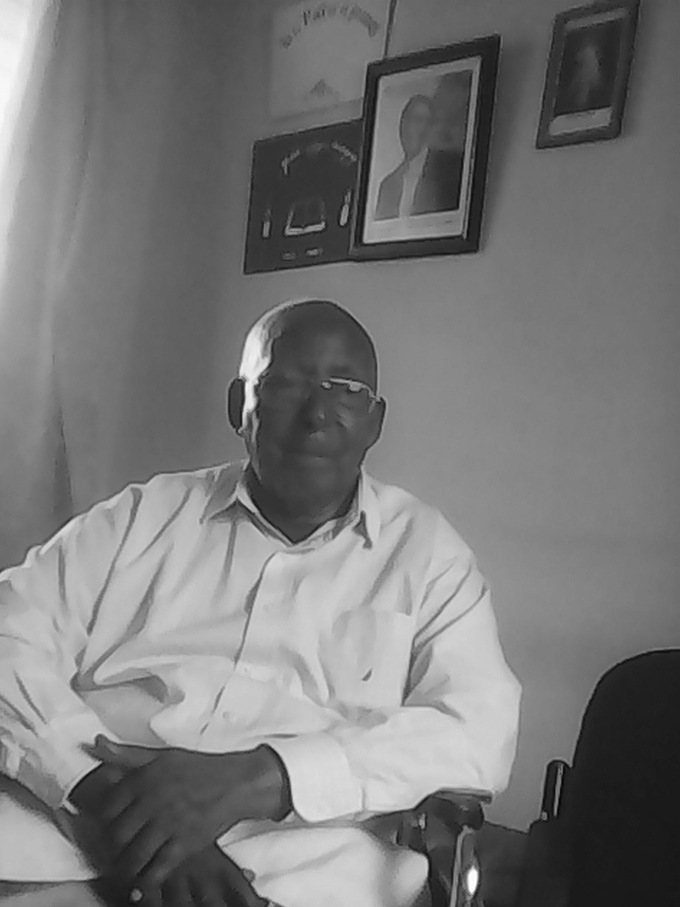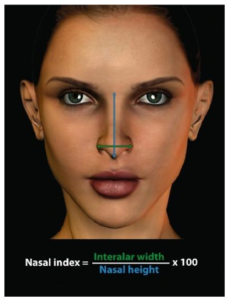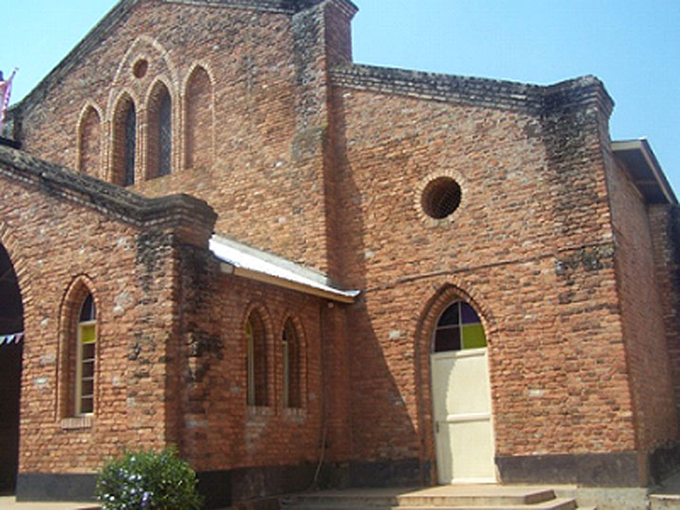
A Rwandan man being measured by a Belgian doctor to determine his ethnicity
It is a Wednesday morning of 1956, Monsignor Eulade Rudahunga then a young priest, had concluded the morning mass in Save parish, the first ever in Rwanda located in Butare Catholic Diocese.
While his four co – celebrants headed to the monastery for their ordinal heavy breakfast, Rudahunga who was ordained priest three years earlier deviated to the parish’s backyard garden.
He sat in a green grass and started meditating the Word of God he had just preached to a small congregation that was already converted to Christianity.
To his surprise, one of the co – celebrants, a visiting Belgian priest Joseph Bourcret from the White Fathers congregation was tracking him, not to join him in prayer, but to achieve another mission, far different from evangelism.
“He was carrying his old grey briefcase. He came close but I ignored him because I was seeking intimacy with God and didn’t want any distraction whatsoever,” said Father Rudahunga.
“He advanced further and when he reached me, he knelt with one leg like someone ready to shoot. I was confused.”
The visiting priest carefully opened his briefcase while staring at Rudahunga as if he had a message for him.
He brought out a tool that Rudahunga thought it was a multipurpose ruler because it had both ruler and compass tool components.

The Vernier Caliper was applied on Monsignor Eulade Rudahunga in 1956
In front of this scenario, Rudahunga already lost his prayer mood as Fr. Joseph proceeded with fixing the tool at his colleague’s nose without permission.
“He vertically placed the silver painted tool on my nose as if he wanted to measure it. He adjusted with its screws. It was pressing and quite hurting above the upper lip,” narrates Mgr Rudahunga.
“I asked him: what are you doing, what is that?”
The only answer Fr Joseph gave to his fellow but younger priest in very clear Kinyarwanda words was: Apuuu! Nakubonye nawe uri kene wabo na kariya kami kanyu, loosely, “Look at you! You are also a relative of your so called king.”
Fr Joseph was referring to King Mutara III Rudahigwa who ruled Rwanda between 1931 and 1959. He had vowed to never acknowledge him as a king.
Little known among the current Rwandan generation, Vernier Caliper is the tool the Belgian Father used to measure the nose of his Rwandan comrade.
This tool was common in the anthropometry. Anthropometric measurements are used to assess the size, shape and composition of the human body.
“It is still in use in several countries to serve anthropology studies,” said Dr Raphael Nkaka, a Rwandan historian who said, in it, anthropometry does not have a negative agenda.
However, once in Rwanda, the anthropometry was distorted to serve division purposes.
Father Joseph used this tool after inspiration from his countryman, Jean Hiernaux.
Hiernaux (1921 – 2007) was a Belgian biologist and anthropologist. He defended the application of race through regional cluster analyses, especially by recognising biological adaptations, especially in Africa.

The Vernier Caliper measures the nose vertically and horizontally – as this demonstration of Jean Hiernaux shows
In his Elongated African Theory that he introduced in his book The People of Africa 1974, Hiernaux seeks to explain the existing physical and genetic diversity in Sub-Saharan Africa through various developmental processes.
“Although now obsolete, the theory remains an instructive example of how excessive post-colonial guilt can easily lapse into faulty science and guesswork,” reads a comment on Land of Punt, a website that specializes on anthropology, genetics, and archaeology among others.
Not many Rwandans today know the Vernier Caliper.
Ezra Mpyisi, an elderly Adventist pastor told KT Press, “I lived at the king palace for many years, but the name of the tool itself sounds new in my ears.”
“I think that people add ingredients in the story around that tool.”
Dr. Antoine Mugesera, a historian also heard people saying the Vernier Caliper was applied to measure their nose, but “the people have died; it was applied in early colonial era and was quickly abandoned when the colonizers realized it might be a weapon against them in the future.”
Despite the lack of information on Vernier Caliper, Mgr Rudahunga who is currently 96 years old told KT Press recently, that he is still suspicious about the Vernier Caliper.
“I was a junior priest and I could not investigate the Belgian Father, but, had I known the tool would lead us to Genocide tragedy, I would have argued with him,” said Rudahunga, now paralytic in his wheelchair, in the same monastery where he met Fr Joseph.
Rudahunga questions more on this tool because Fr. Joseph used to hide it, and to apply it, apparently on selective people.
He remembers a case on 23 June 1957 when he was invited in a family in Nyaruguru region, south, the day of Corpus Christ, a celebration of the body and blood of Christ in the Holy Eucharist.
Fr Joseph insisted he wanted to accompany him and they both drove to Nyaruguru. Once in the host family, Fr Joseph started disturbing three men he found there.
“I just want to see whether you can qualify to be warriors of the king,” Rudahunga quotes Fr. Joseph.
The three men were Fabien Munyuzangabo, Farancois Gahene and Gaspard Sagahutu.
“He placed that ugly tool vertically at their nose one by one and pushed one away saying he did not qualify but the other two did. Oh! I see your king has a big army,” Mgr Rudahunga remembers.
“I was furious but had nothing to do. I later asked him why he did that and he just laughed at me saying: You Tutsi and your rat king remain with just a number of days before the oppressed decides your fate.”
With all such behaviors, Rudahunga told KT Press, I deduced that I am talking to a spy, not a fellow priest.

Save Parish the exact Church where Mgr. Rudahunga co-celebrated mass with his former colleague Fr Joseph
Meanwhile, King Mutara III Rudahigwa died two years after Fr Joseph’s declaration to Fr. Rudahunga. He died on 25 July 1959 aged 48 in Bujumbura, Burundi.
Five months later, November 1959, the Revolution of Hutu was launched and consisted of burning houses and killing of the Tutsi.
Mgr. Rudahunga does not know the whereabouts of Fr. Joseph. He used to go on missions in Burundi and Tanzania where White Fathers’ congregation had a mission.
“At some point, he travelled to Burundi and I never saw him again,” he said.
Fr Joseph congregation where also Mgr. Leon Classe belonged has 8 missionaries remaining in Rwanda after closing the Butare mission two weeks ago.
Despite the disappearance of the man with a Vernier Caliper however, Rwandans left instilled with an ideology that noses of the Hutu and Tutsi were different.
During the 1994 Genocide against Tutsi some Tutsi threw away identity cards that included ethnic belonging while at roadblocks. Interahamwe would always do a biased and corrupt judgment based on the same illusion; ‘Nasal difference’.

